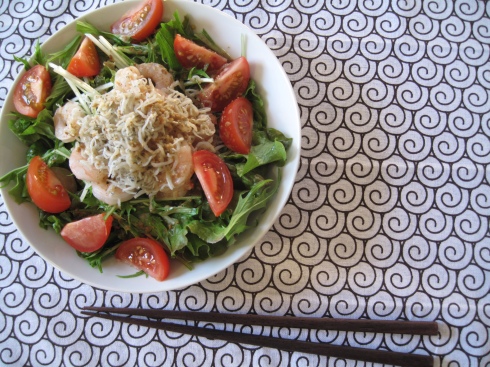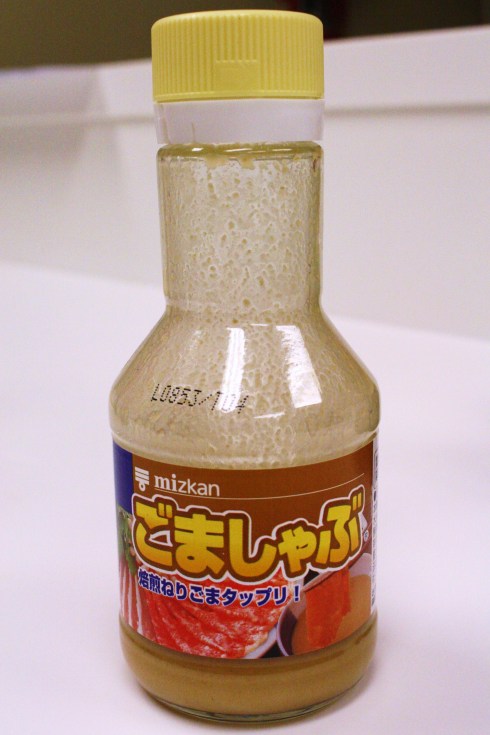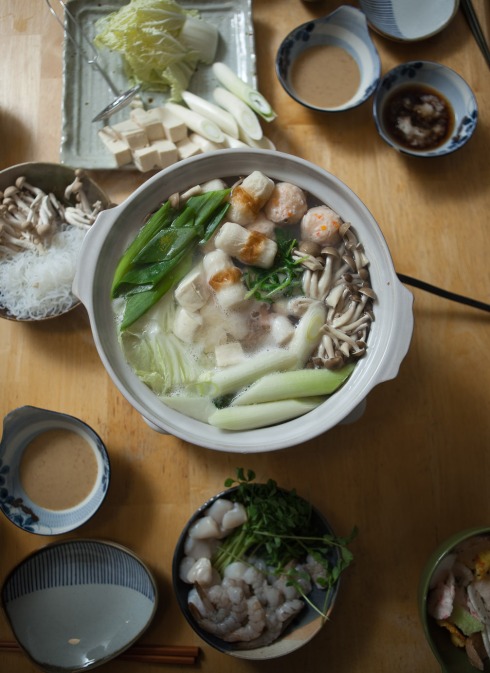For matching traditional taste and foreigner’s enjoy of Japanese foods,
can use sesame easily in the dressing.
Creamy nuts taste is liked by everyone.
I’m often asked my advice on products and brands by those who want to cook more Japanese foods, but just aren’t sure what to do when they enter their local Asian supermarket. “What’s the big deal?” I thought, “all you have to do is read the labels”. After a recent trip, however, I realized how often those labels were written only in Japanese! So here goes my first attempt at introducing you to one multi-purpose (and uber-delicious) Japanese-only labelled product: Goma-shabu, a sesame dip.
As you may know, the insanely popular salad, spinach goma-ae translates literally to “spinach dressed with sesame”, but you can make anything goma-ae with the addition of some sesame sauce. I don’t know how or why it happened, but North American sushi shops abandoned the traditional soy-sauce based dressing (easily made with soy sauce, sesame seeds, and sugar) for a richer, creamy-style sesame dressing (warning to those with allergies – I highly suspect many of them use a peanut-based sauce). And despite my disdain for this inauthentic topping for spinach gomaae (it isn’t the real deal! Don’t be fooled into thinking the Japanese eat anything like it at home) I must admit that a creamy sesame sauce is damned delicious. The closest pre-bottled dressing I can find for those who want to recreate their favourite restaurant treat at home is Goma-shabu. It’s not only tasty, but also versatile.
So here is the bottle:
And here is how to use it:
- use it straight up as a salad dressing on a green salad, tofu salad, or noodle salad
- mix in a few tablespoons with a can of tuna for a twist on tuna salad
- on a tuna sashimi & avocado donburi – arrange sliced sashimi and avos on a hot bed of rice, pour on a little dressing and top with crushed sesame seeds to garnish
- stir it into a bowl of grilled or BBQ-ed vegetables like eggplant, zucchini squash and pumpkin
- use it for its original purpose, as a dip for hotpot. It’s specifically meant for beef shabu-shabu, but I use it for veggie and seafood hotpots as well
Really, anything I put it on tastes better. Shake it well, as it separates, and try it on anything else you fancy.
Happy forking!










